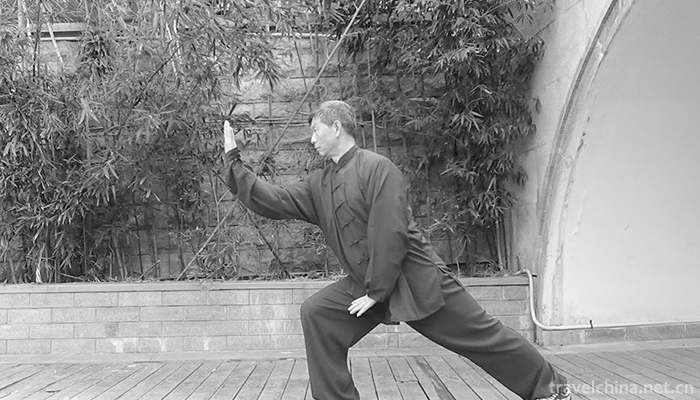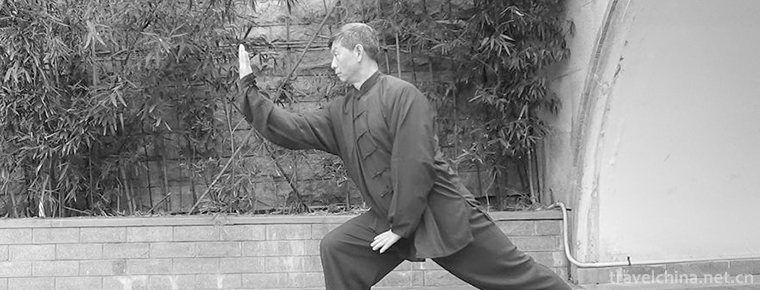Linking Luhe boxing
Linking Luhe boxing
Xinyi Liuhe Quan, also known as Xinyi Quan and Liuhe Quan, is one of the most famous excellent types of boxing in China, which combines fighting, fitness, self-defense and health preservation. It is one of the traditional Chinese boxing, an important part of Chinese martial arts culture and Oriental mysterious culture. From mind to business, and from mind to boxing.
According to legend, Xinyiquan was created by Jijike of Shanxi Province in the late Ming and early Qing Dynasties, and later by Ma Xueli of Henan Province, which has been passed down to the present day. In 2007, it was listed in the first batch of provincial intangible cultural heritage.
On June 7, 2008, Xinyi Liuhe Quan was listed in the second batch of national intangible cultural heritage list with the approval of the State Council.
brief introduction
Xinyi Liuhequan is also known as the technique of guarding holes and dust. As the name implies, this boxing is also called Xinyiquan because it is from mind business and from mind to mind.
Xinyiquan is legendary created by Ji Jike, a martial artist in the late Ming and early Qing Dynasties. Since the foreigners came to the Central Plains, there was a strong anti-Qing thought at that time. Later, after arriving at the Shaolin Temple in Henan Province, they stayed there to teach because of their excellent martial arts. During their stay, they studied deeply the Five Elements Quan which was prevalent in Shaolin in the Ming Dynasty. Then one day, when the two chickens were fighting, they realized their reason and created a six-in-one relationship. Later, Xinyi Liuhequan has been a major branch of Henan Xinyi Liuhequan for hundreds of years since it was passed down from Luoyang personage Ma Xueli.
When practicing mind boxing, there are requirements of "outside three-in-one" and "inside three-in-one". The so-called "three-in-one" refers to "shoulder and crotch, elbow and knee, hand and foot", that is, all parts of the body should cooperate with each other in the exercise of boxing; while the "three-in-one" refers to "mind and agreement, will and Qi, Qi and strength", that is to say, it is the combination of inner mood and punch, strength and so on, that the power can be exerted. The exercise route of Xinyiquan is mainly straight forward and backward, and the footwork is steady and solid. The ten shapes of Xinyiquan imitate the actions of dragon, tiger, horse, monkey, chicken, kite, swallow, snake, bear and eagle in attacking, crossing, hunting and dodging. They have obvious offensive and defensive consciousness. Each shape has its own unique meaning. In terms of recruiting style, they are mostly single-form, while the routine only has four beats and one set, and there are also two and a half created by later generations, and so on. PS: Six-in-one also refers to the combination of chicken leg, eagle-catching, dragon body, bear's arm, tiger's embracing head and thunder.
Zhoukou Xinyi Liuhe Quan has developed rapidly, spreading not only to Beijing, Shanghai, Anhui, Hubei, Hong Kong, Taiwan and other places, but also to the United States, Australia, Canada, South Korea, New Zealand and other countries and regions


-
1.Huangdi Mausoleum Scenic Area
Huangdi Mausoleum is the tomb of Xuanyuan Huangdi, the ancestor of the Chinese nation. It is the only Huangdi Mausoleum recorded in Historical Records.
Time 2018-12-12 -
2.Eight treasures tomato
Blanch the tomatoes with boiling water, peel them off, dig a round piece along the pedicle one week, remove the seeds and wash them. Cut all the accessories into small dices, mix shrimps and meat with
Time 2019-03-25 -
3.Cloth tiger
Cloth tiger is a kind of traditional handicraft which has been widely spread among Chinese people in ancient times. It is also a good toy for children, indoor decoration
Time 2019-04-04 -
4.Sintering Techniques of Cizhou Kiln
Cizhou kiln firing technology, the local traditional firing technology of Fengfeng mining area in Hebei Province, is one of the national intangible cultural heritage.
Time 2019-04-22 -
5.Wharf song
The dock number is a traditional folk song in Shanghai. Singing in docks, cargo yards, loading and unloading, lifting, push and pull and other labor occasions. The main singing methods of wharf number
Time 2019-05-16 -
6.virtuous and filial
Xianxiao was born out of Buddhist folklore, and has a deep relationship with Xiliangle music, Dunhuang Bianwen and Hexi Baojuan. The way of inheritance mainly depends on the artistic population. Its c
Time 2019-07-01 -
7.Xingshan Folk Song
On May 20, 2006, Xingshan Folk Song was approved by the State Council to be included in the first batch of national intangible cultural heritage list.
Time 2019-07-08 -
8.Beijing Institute of Fashion Technology
Beijing Garment College was founded in February 1959, formerly known as Beijing Textile Technology College. In July 1961, it was renamed Beijing Chemical Fiber Engineering College. It was a key univer
Time 2019-09-06 -
9.Mount sanshen
The three sacred mountains in Yading, Daocheng, are composed of three snow peaks, xiannairi, yangmaiyong and xianodoji, representing respectively Guanyin Bodhisattva, Manjusri Bodhisattva and Vajrayana Bodhisattva.
Time 2020-10-13 -
10.Cuiping Mountain Park
Cuipingshan Park, located in the northwest of Yibin City, Sichuan Province, is a famous urban forest park integrating scenic spots and forest scenery. It is mainly composed of Cuiping mountain and Zhenwu mountain.
Time 2020-10-16 -
11.Social undertakings in Luzhou
As of the end of 2018, Luzhou has added 1 provincial key laboratory, 1 provincial engineering technology research center, 4 incubators of science and technology enterprises above the provincial level, and 16 national high-tech enterprises. The annual output value of high-tech reached 38
Time 2020-12-14 -
12.Yibin secondary industry
In 2019, the total industrial added value of Yibin City is 99.082 billion yuan, an increase of 9.5% over the previous year, and its contribution rate to economic growth is 45.5%. At the end of the year, there were 824 Industrial Enterprises above Designated Si
Time 2020-12-18